Summary of climate disasters on the planet: March 12–18, 2025
In Italy, a powerful earthquake struck the area of the Campi Flegrei supervolcano — the strongest ever recorded in the region. In the USA, a deadly storm unleashed nearly 100 tornadoes in just three days. And in Brazil, hurricane-force winds brought down a 200-year-old symbol of the city.
But there is one more thing that the force of nature destroys even faster than buildings, roads, or entire regions—it destroys our ability to empathize.
Read about this and other climate events that occurred during the week of March 12–18, 2025, in the article below.
USA
A deadly storm front swept across the United States from March 14 to 16, leaving behind chaos and destruction. It triggered tornadoes, dust storms, torrential rains, snowfalls, and wildfires, affecting vast areas from California to Alabama.
In just three days, 100 tornadoes were recorded across the Midwest and the South, turning entire neighborhoods into ruins.
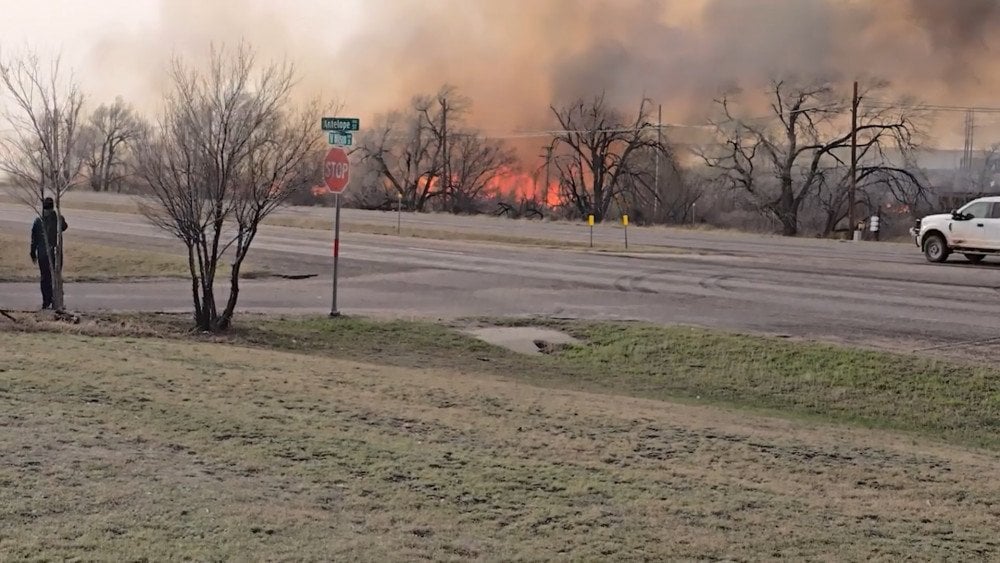
A powerful wildfire destroys everything in its path, USA
The state of Missouri suffered the most — 12 people lost their lives, and more than 500 homes were destroyed in the city of Poplar Bluff.
In St. Louis County, a powerful EF2 tornado traveled nearly 50 km (31 mi) through densely populated areas. The funnel, over one kilometer (0.6 mi) wide, frequently changed direction and caused severe damage across at least nine communities.
In Alabama, the storm claimed two lives, and serious damage was reported in 52 counties.
In Arkansas, radar detected no fewer than 10 tornadoes, including two powerful EF4s that hit on a single day, March 14. This was the first time such an event occurred in 28 years.
The cities of Cushman and Cave City were so severely damaged by an EF3 tornado that some neighborhoods became unrecognizable.
In Mississippi, the small town of Tylertown was struck by tornadoes twice in just one day.
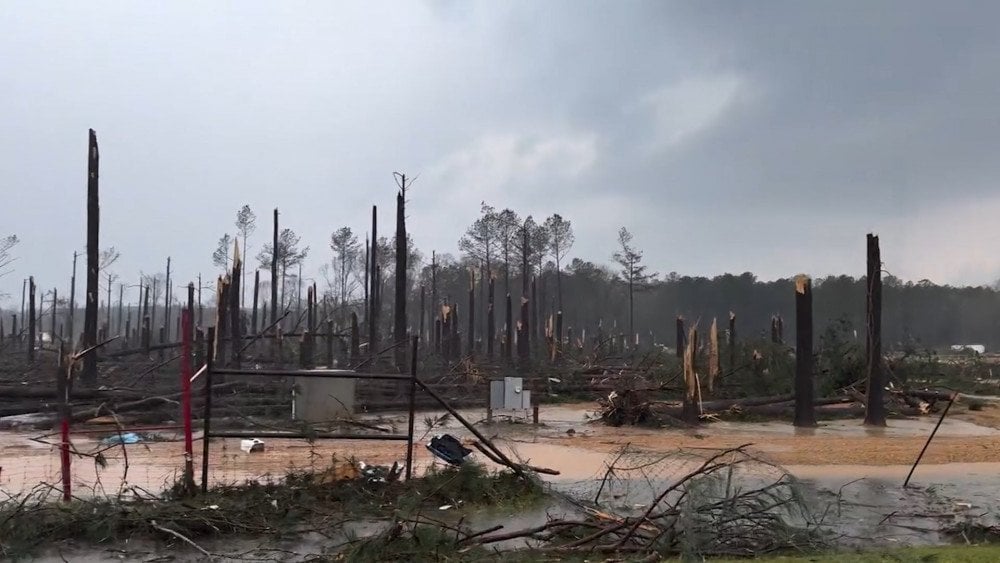
Trail of destruction left by the tornado in Tylertown, Mississippi, USA
In the state, heavy rains triggered flash flood warnings. And to complete the chaos, a 3.0 magnitude earthquake struck central Mississippi around the same time.
Hurricane-force winds also led to large-scale wildfires in Oklahoma, Texas, and Kansas. Emergency evacuations were declared in several towns.
On March 15, Oklahoma reported 130 active wildfires across 44 counties. The fires destroyed more than 400 homes, claimed at least four lives, and left over 140 people injured.
Winds reaching speeds of 136 km/h (85 mph) caused massive dust storms in Texas and Kansas. Visibility plummeted, turning roads into deadly traps. In the areas of Lubbock and Amarillo, over 30 accidents occurred, resulting in four fatalities. In Kansas, a dust storm caused a major pileup on Interstate 70, killing eight people and injuring another 46.
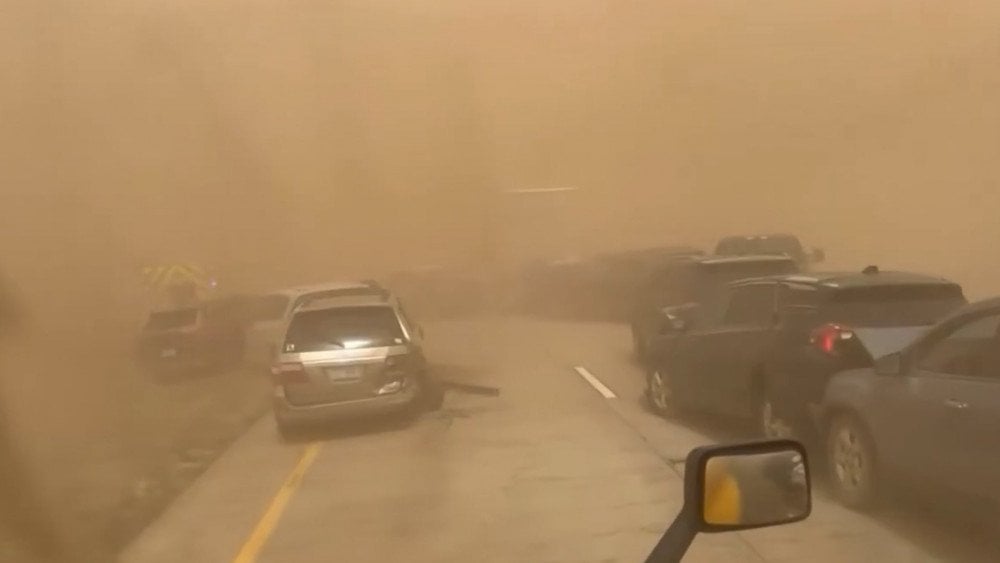
A massive dust storm led to a collision involving dozens of vehicles, Texas, USA
This storm became one of the most destructive in the United States in recent years. Meteorologists described it as an “extreme high-intensity weather event.” Although tornado outbreaks are not uncommon in March and April, this time, powerful weather phenomena overlapped, making the situation especially dangerous and leading to colossal destruction and the deaths of at least 42 people.
Peru
Torrential rains in Peru triggered floods, mudflows, and landslides.
In Aymaraes province, Apurímac region, on March 12, a mudflow flooded more than 100 meters (328 feet) of a vital interoceanic highway connecting Peru and Brazil.
Several vehicles that had stopped to wait out the dangerous downpour were swept off the road by the massive mudflow.
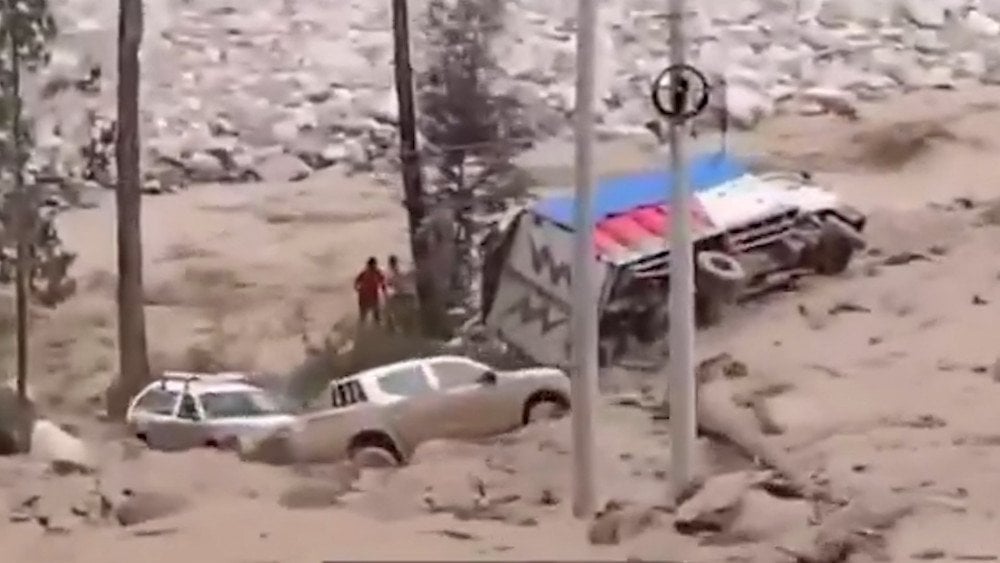
A massive mudflow sweeps people and vehicles off the road, Apurímac region, Aymaraes province, Peru
Rescuers tried to pull people from the stream of liquid mud. At least three people died, and nine were reported missing.
On the same day, the streets of Juliaca, the largest city in the Puno region, turned into rivers. Police officers rescued people trapped by rising water.
On March 15, a landslide occurred on the central Pasco–Huánuco highway, burying the road under boulders and mud. Hundreds of vehicles were blocked, and passengers had to cross the dangerous section on foot.
Spain
On March 13, in the town of Torremendo, Orihuela municipality, a sudden but powerful storm with strong wind gusts and a tornado left a trail of destruction in the city center: it brought down trees, a power line pole, fences, tore off cornices, and even caused part of a building to collapse.

Powerful storm wind flips furniture in a yard, Torremendo, Spain
According to eyewitnesses, the extreme weather lasted no more than ten seconds, but it was enough to turn the streets into chaos. Residents consider it a miracle that no one was injured.
Brazil
On March 12, residents of Brazil once again found themselves at the mercy of the forces of nature.
In the city of São Paulo, torrential rains flooded streets, hail fell in some areas, and winds knocked down more than 340 trees. Among them was a historic symbol of the city — a 200-year-old tree standing 30 meters (98 feet) tall.
The maximum wind speed recorded by weather stations was 62.9 km/h (39 mph), but based on the scale of destruction, experts concluded that gusts in the city center exceeded 100 km/h (62 mph).
The localized nature of the damage suggests that it was likely a microburst.
Due to the wind, traffic was blocked on 63 roads, and 173,700 households were left without power.
As a result of a fallen tree hitting a taxi, passengers were injured, and tragically, the driver lost his life.
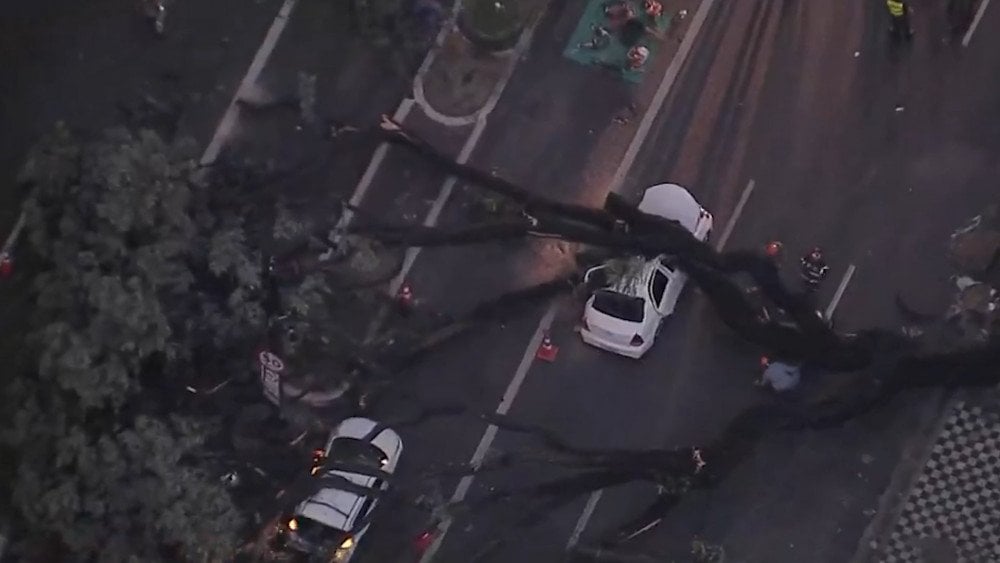
Tree knocked down by strong wind damages a vehicle, Brazil
In Rio de Janeiro, Brazil’s second-largest city, the storm paralyzed transportation.
Santos Dumont Airport experienced flight delays, and operations were partially disrupted at the metro system and at one of the city’s largest hospitals, Hospital Municipal Souza Aguiar.
In the Cidade Nova district, a circus that had operated in the same location for 21 years suffered massive losses—its metal structure was simply torn apart by the wind.
Italy
On March 14, after heavy downpours, the Italian regions of Tuscany and Emilia-Romagna were hit by powerful floods. Tourist resorts were literally submerged.
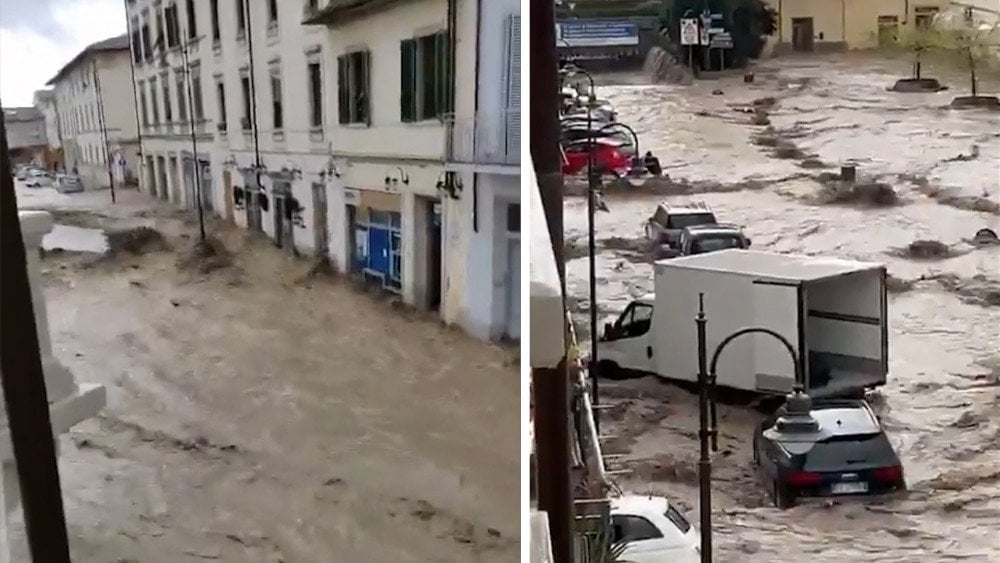
Flooded city streets, Tuscany region, Italy
In Mugello, Tuscany region, up to 110 mm (4.3 in) of rainfall fell in less than 12 hours, while the average monthly norm for March is 74 mm (2.9 in).
In Florence, an entire month’s worth of rain fell in just a few hours. In several cities—Florence, Pisa, Prato, and Pistoia—a red alert level was declared.
Schools and public institutions were closed, including the famous Uffizi Gallery.
Due to landslides, several small towns were cut off. Overflowing rivers swept away cars.
In Emilia-Romagna, due to record-breaking flooding, authorities in the city of Bologna evacuated residents from ground floors.
In the province of Ferrara, at least five tornadoes were observed, along with large hail up to 7 cm (2.8 in) in diameter.
During the night of March 13, at 01:25 local time, a strong earthquake with a magnitude of 4.6 struck at a depth of around 2.5 km (1.6 mi) in the Campi Flegrei supervolcano area. The epicenter was located between the city of Pozzuoli and the Bagnoli district of Naples.
According to the National Institute of Geophysics and Volcanology, this seismic event was the most powerful to hit the area in the past 40 years of instrumental observations.
That same night, a swarm of 44 tremors with magnitudes up to 1.7 followed.
The earthquake seriously frightened local residents, who have already been living under stress for a long time near Europe’s largest supervolcano, which is showing clear signs of increased activity.
Many people chose to spend the rest of the night outdoors, avoiding a return to their homes.
In Pozzuoli, a woman was injured when a ceiling collapsed. In Naples’ Bagnoli district, firefighters helped several people who were trapped because their front doors were jammed. Residents of the lower floors managed to escape through the windows on their own.
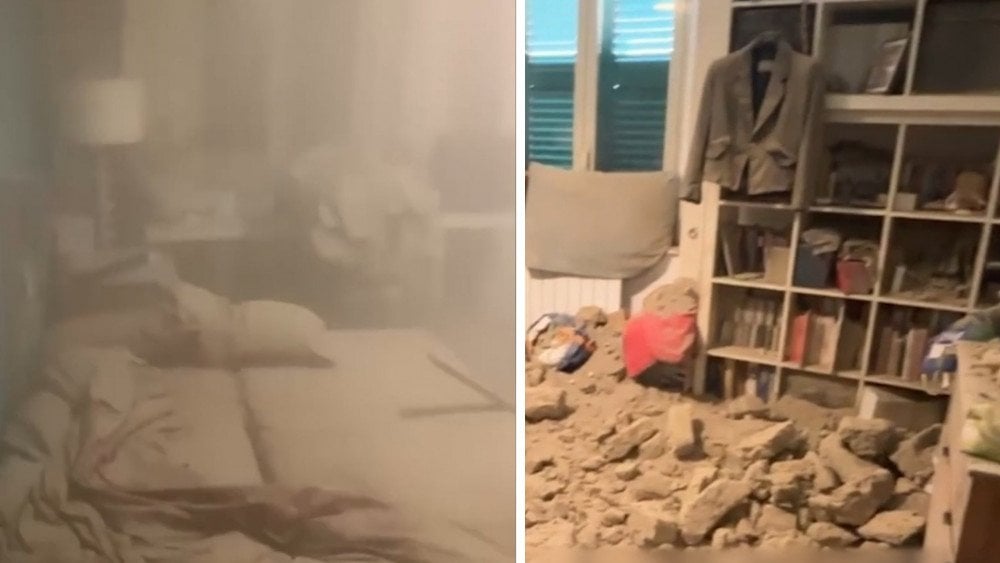
M4.6 earthquake caused ceiling collapse, Pozzuoli, Italy
Falling debris from buildings, including parts of the bell tower of the Church of Saint Anne, shattered windows of parked cars.
In the cities of Naples, Pozzuoli, and Bacoli, authorities evacuated more than 300 people.
Over the next two days, March 14 and 15, new earthquakes with magnitudes of 3.5 and 3.9 struck, intensifying concern in the region.
It is worth noting that the M4.6 earthquake on March 13 occurred against the backdrop of a rapid increase in ground uplift rate in the Campi Flegrei supervolcano area. From February 17 to March 16, 2025, uplift reached 30 ± 5 mm/month (1.18 ± 0.2 in/month), tripling the previous 2024 rates (the average ground uplift rate since August 2024 was 10 mm/month or 0.39 in/month).
Romania
On March 13, storms with thunderstorms, heavy rains, and strong winds struck Romania. In the capital city, Bucharest, winds uprooted 61 trees, damaging dozens of vehicles. In Vrancea County, a person was killed by a falling tree.
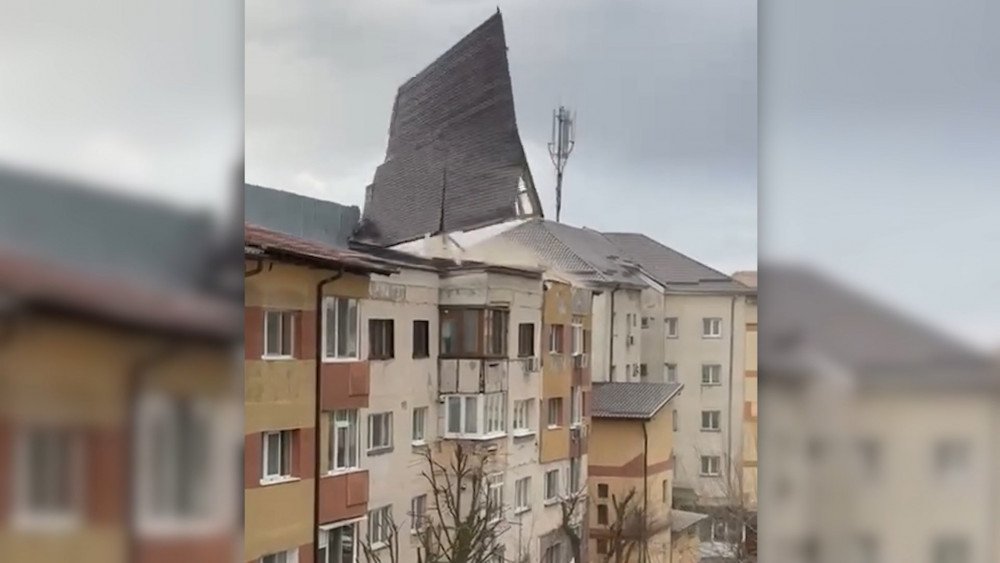
Strong wind tears the roof off a house, Suceava County, Romania
The storm tore the roof off an apartment building in the city of Gura Humorului, Suceava County, and in the city of Carei, Satu-Mare County, the extreme weather overturned a truck.
On Omu Peak, in the Bucegi Mountains, a wind gust of 183.6 km/h (114 mph) was recorded.
Hail, a highly unusual phenomenon for this time of year, fell in many regions of the country and turned roads into sheets of ice. In the city of Brașov, Brașov County, it damaged vegetation, and the impact of the hailstones shattered car windows and dented vehicle bodies.
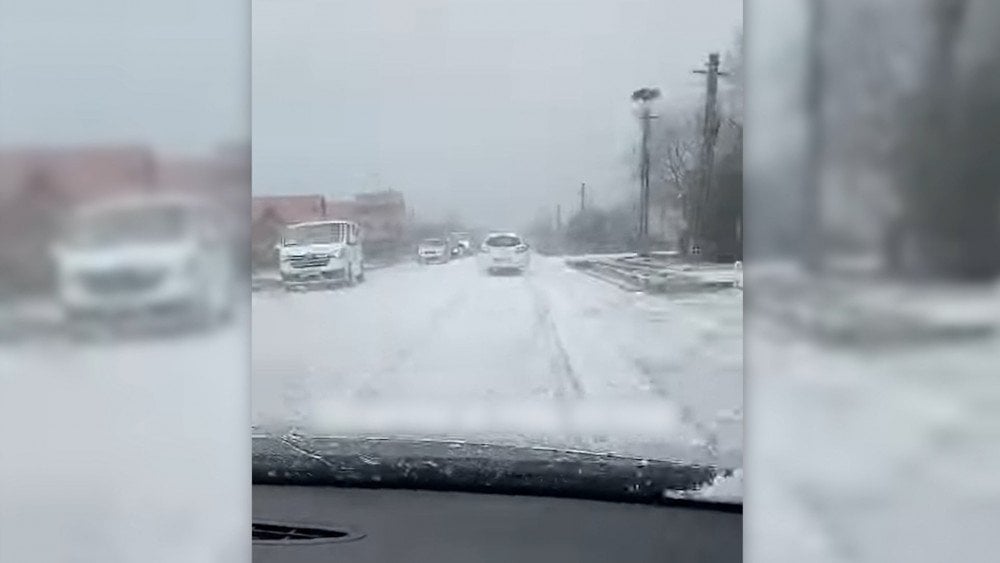
Sudden hailstorm disrupts car traffic, Romania
In Cluj County, lightning struck a residential building, causing a fire, and in Maramureș County, 13 localities were left without electricity due to downed trees and power poles.
To conclude this article, we would like to offer our valued readers a topic for reflection.
The frequency and intensity of climate disasters continue to grow—and naturally, the number of those affected and killed is increasing as well.
From the accounts of eyewitnesses who have survived major cataclysms, we know that people usually survive where there is mutual aid, compassion, and support. Facing the forces of nature alone is nearly impossible.
In the first hours, and sometimes even days, rescue services may be unable to reach the disaster site. In such moments, the only hope lies with those nearby.
But the truth is, tragedy doesn’t always evoke the necessary response.
Our minds work in such a way that when a single person dies, we feel compassion. But when the number of victims reaches thousands or even millions, it turns into dry statistics, and empathy fails to activate. All that remains is fear: “What if I end up in their place?”
The more disasters and victims we witness, the less compassion and willingness to help we will feel. Instead, selfishness will grow, along with the instinct to save only ourselves.
According to scientists, if immediate action is not taken, climate catastrophes will escalate to a level where they claim massive numbers of human lives.
But do we really want to live in a world where everyone is out for themselves? Do we want to find ourselves in a situation where each of us faces disasters alone, surrounded by hostile strangers?
This is yet another compelling reason to act now—to find a way out of the climate crisis.
You can watch the video version of this article here:
Leave a comment